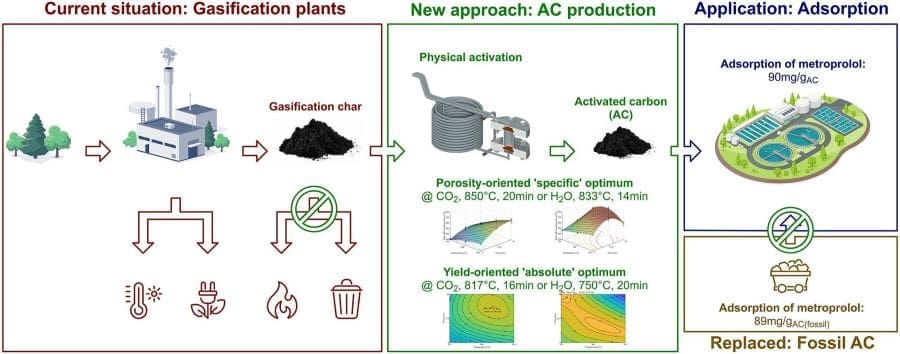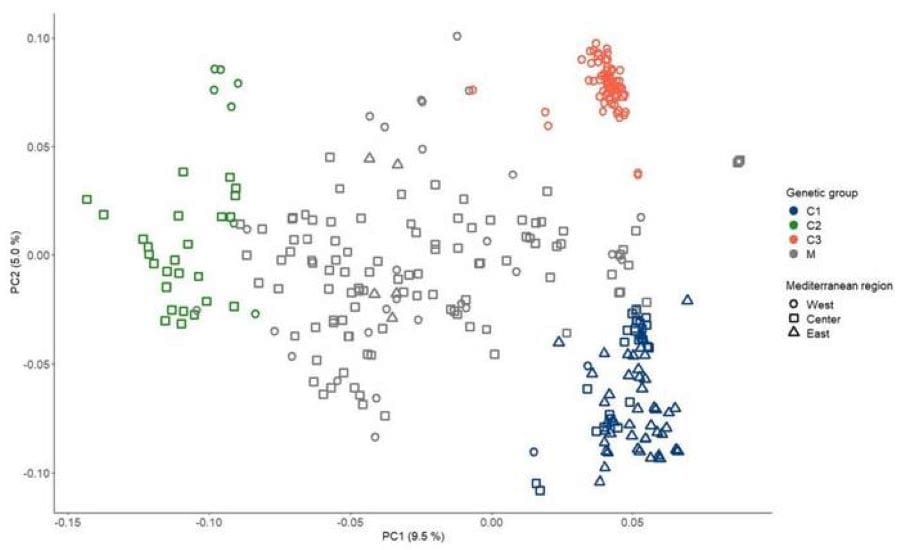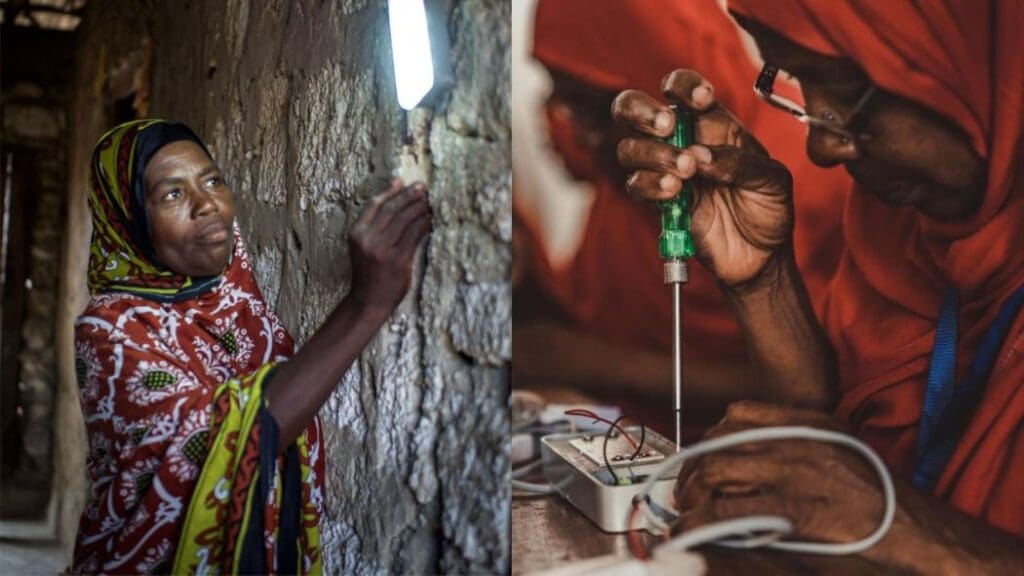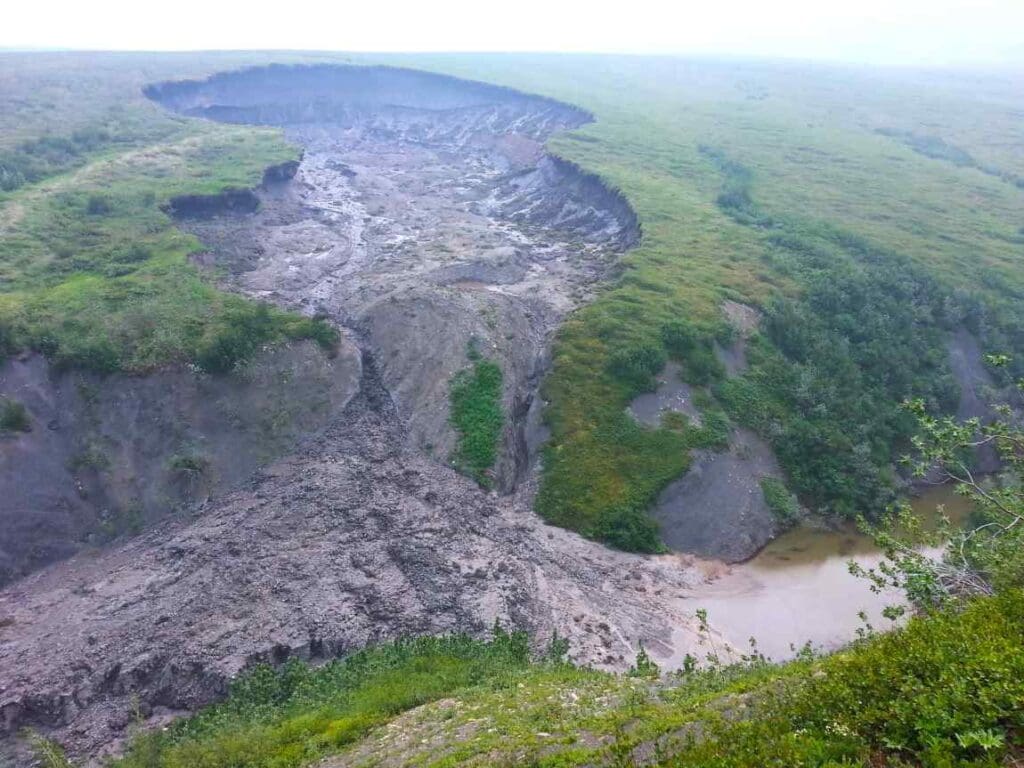Explore the latest insights from top science journals in the Muser Press daily roundup, featuring impactful research on climate change challenges.
In brief:
Climate cost of global trawling still uncertain
Convex Seascape Survey scientists are studying the impact of fishing methods that use towed nets which are dragged along the seafloor, such as trawling and dredging.
These methods are the main way that humans disturb ocean sediments – the world’s largest reservoir of organic carbon – but there is disagreement about the amount of carbon these methods release.

The new study, led by researchers at the University of Exeter, begins to untangle this mystery.
“To find out how much carbon is being released by these fishing methods, we need to know how much of the seabed is actually being disturbed,” said Mollie Rickwood, from the Centre for Ecology and Conservation on Exeter’s Penryn Campus in Cornwall.
“The best data available is from European fishing vessels, and previous research has used European fishing gear metrics to estimate the area of seafloor disturbed globally.
“Our main finding is that vessel and gear sizes vary a lot from country to country – so using European data to make global estimates is likely to lead to large inaccuracies in the amount of the seafloor trawled, and therefore how much carbon could be released to the atmosphere.”
The new paper demonstrates the need for good regional data on the size of fishing vessels and gear, to allow accurate estimates of seafloor disturbance.
“At present, this is almost impossible due to the big European bias in existing data, as well as a lack of standardised reporting of fishing gear,” Rickwood continued.
“Our paper is a ‘call to arms’ to address these knowledge gaps and encourage global collaboration between science and industry to make this data available.”
The paper was published in the journal Fish and Fisheries.
The Convex Seascape Survey, an ambitious five-year global research programme, is the largest attempt yet to build a greater understanding of the properties and capabilities of the ocean and its continental shelves in the earth’s carbon cycle, in the urgent effort to slow climate change.
“Ocean carbon stores could be more secure than those on land, where forests, bogs and tundra are increasingly impacted by wildfire, flood and drought. So it is critical we understand how safe carbon is once it is locked away in the seabed,” said Professor Callum Roberts of Exeter University, who leads the Convex Seascape Survey.
Journal Reference:
Rickwood, M., Kerry, C., Eigaard, O.R., Sala, A., McLaverty, C., Roberts, C.M., Godley, B.J. and Metcalfe, K., ‘Regional Variation in Active Bottom-Contacting Gear Footprints’, Fish and Fisheries (2025). DOI: 10.1111/faf.12893
Article Source:
Press Release/Material by University of Exeter
Renewable high-quality activated carbon from low-quality by-product
Gasification of wood for green energy production is a key strategy in the fight against climate change. The process converts wood into a combustible gas at high temperatures that can be used as a fuel or to generate electricity. In some gasification reactors, dirty wood, including bark and needles or even waste wood can be used as feedstock.
However, about 10 % of the wood still remains as a solid by-product: gasification char. While plant operators struggle to find uses for this residue, it has some similarities to activated carbon, particularly the high carbon content, and thus could be upgraded to activated carbon.
In a study published in the journal Carbon Resources Conversion, a team of Austrian researchers focused on producing activated carbon from gasification char by physical activation. In the process, oxidising gases at high temperatures create tiny pores, in which pollutants can be captured.

“While activated carbon is typically derived from hard materials such as fossil coal or biogenic shells, which are conducive to high porosity, gasification char originates from softer materials (wood), making it difficult to achieve high adsorption capacities and economic feasibility,” explains first author David Gurtner, a PhD student at BOKU University. “Nonetheless, I believe gasification char has the potential to be a useful resource.”
Furthermore, Gurtner noted that there is a dearth of studies on the topic, with previous studies lacking economic analyses, a systematic approach and comprehensiveness.
To that end, the researchers aimed to optimise porosity and micropollutant adsorption while maximising the yield using Design of Experiments, a powerful statistical tool. Despite the existing challenges, they succeeded in producing high-quality activated carbon with a surface area of 800 m2/g.
“To put this figure into perspective, one teaspoon of this activated carbon has the surface area of an ice hockey field,” shares Gurtner. “Furthermore, the adsorption capacity could be increased by a factor of 11, and mild H2O activation (≤750 °C, ≥20 min) was the most effective approach.”
The process has since been successfully upscaled at a commercial gasification plant with promising results.
“The demand for renewable activated carbon is set to continue growing,” says co-author Jan Back, an expert in water treatment. “New EU regulations will require the removal of micropollutants in large wastewater treatment plants by 2045, and Switzerland has already demonstrated the feasibility of the large-scale application of activated carbon in wastewater treatment plants since 2016.”
The researchers hope that their study will encourage the gasification industry to adopt this value-added pathway for renewable activated carbon production, thereby replacing the use of fossil activated carbon in wastewater treatment.
Journal Reference:
David Gurtner, Jan O. Back, Dominik Bosch, Angela Hofmann, Christoph Pfeifer, ‘Renewable activated carbon from wood-based gasification char: A comprehensive study on physical activation’, Carbon Resources Conversion 100310 (2025). DOI: 10.1016/j.crcon.2025.100310
Article Source:
Press Release/Material by KeAi Publishing
Delaying the net zero transition could impose significant economic costs, new research reveals
Delayed and disorderly energy transitions will threaten economic and financial stability whilst also increasing the economic risks from climate change, according to a new study from the University of Surrey. Conversely, transitions that are started sooner are likely to be more orderly and economically beneficial.

The paper, published in Ecological Economics, simulates different energy transition scenarios and finds that earlier transitions are more economically beneficial than delayed, rapid shifts. By analysing the interactions between industries, investment patterns, and financial markets, the researchers show that disorderly transitions—where changes happen too quickly — can lead to economic instability and financial risks.
Dr Andrew Jackson, Senior Research Fellow at the Centre for the Understanding of Sustainable Prosperity and lead author of the study at the University of Surrey said: “Transitioning to a low-carbon economy is critical. Our work shows how delayed and disorderly transitions could ultimately lead to a combination of increased inflation, higher interest rates, economic stagnation and financial instability. Avoiding these transition risks, as well as the physical risks from climate change, requires that governments take concerted action now’ and do not delay action on the transition any further.”
The research also suggests that targeted investments in green technologies, a robust financial framework to support these investments, and a clear and credible transition pathway can enable a smoother transition while safeguarding economic stability.
Dr Jackson continued: “By prioritising an orderly transition that is well signposted, governments can mitigate the risks associated with delayed and disorderly transitions. We need a re-evaluation of current transition strategies to advocate for an approach that considers the economic and financial costs from delaying the transition as well as the upfront costs of the transition itself. Only by taking a holistic view of all these costs can we pave the way for a sustainable future without jeopardising economic and financial stability.”
Journal Reference:
Andrew Jackson, Tim Jackson, ‘Macroeconomic, sectoral and financial dynamics in energy transitions: A stock-flow consistent, input-output approach’, Ecological Economics 230, 108507 (2025). DOI: 10.1016/j.ecolecon.2024.108507
Article Source:
Press Release/Material by Georgie Gould | University of Surrey
Solutions are a big part of alternative media’s environmental reporting but need consistent support, Concordia study shows
There’s no getting around it: staying on top of the world’s environmental challenges can be a grim experience. Climate change, floods, wildfires, collapsing biodiversity — it’s enough to turn many readers off the news entirely.
To push back against this relentless tide of negativity, some journalists engage in a practice called solutions journalism. This approach uses standard journalistic methods to present behaviours, actions and strategies that can mitigate, reverse or help us adapt to environmental damage: in other words, offer solutions to existing problems.

There has been a noticeable shift in the Canadian media landscape toward solutions journalism over the past decades, and leading that transition are the country’s independent alternative media outlets.
In a paper published in the journal Environmental Communication, two Concordia researchers study the frequency of solutions journalism in environmental reporting in seven Canadian alternative media outlets. Through content analysis and interviews with reporters, the researchers found that the practice requires strong institutional support, even when climate journalism is an integral part of a given outlet’s coverage.
“If a newsroom does not have an environment that is nurturing toward solutions journalism, it won’t happen, even in organizations like alternative media outlets where it is part of their mission,” says study co-author Amélie Daoust-Boisvert, an associate professor in the Department of Journalism.
“Even with training and discussions in editorial meetings, reporters are constrained by their daily routines and the pressures of the job. Nevertheless, solutions journalism fits some media better than others, depending on their audience and orientation.”
Arriving there by doing the job
The study, which builds on co-author Willow Beck’s 2023 MA thesis, uses a mixed-methods approach. The first phase consisted of a content analysis of all the journalism articles produced by seven alternative Canadian media outlets in 2022: The Tyee, Canada’s National Observer, The Narwhal, IndigiNews, The Discourse, The Sprawl and, in French, Pivot.
Of the near 4,000 items produced, some 1,700 pieces were identified as having connections to climate or the environment, or roughly 43 per cent. The researchers assessed the “solution-ness” of these articles according to definition of solutions journalism proposed by the Solutions Journalism Network.
For an article to be assigned solutions focused, it must: feature the response to an identified problem, offer insights that are more broadly applicable, include evidence that the solution is effective and list the response’s limitations.
A zero to four Likert scale was used to determine the degree of solution orientation for each article, with zero being “not at all” to four being “totally.” Of a subsample of about 250 articles, 17 per cent scored high, at three or four on the scale, which researchers found surprisingly low.
Follow-up interviews with seven reporters who signed those solutions stories revealed that journalists often did not set out to deliberately write solutions journalism. In fact, some said they were unaware they had written a solutions story: as far as they were concerned, they were just doing their day job.
“Most of them knew about solutions journalism and some might have had training in it or discussed it in meetings,” says Daoust-Boisvert. “But because the nature of alternative media requires them to differentiate themselves from legacy media, they often arrive at solutions journalism just by looking for different angles.”
While she acknowledges that good solutions journalism requires consistent support from publishers and managers, she adds that an increase in public interest in positive alternatives to the consistent messaging of climate gloom and doom can encourage newsrooms to pursue these kinds of stories.
“We’re not saying that everybody should be doing it or that it will solve the many crises facing journalism today, but I do believe it has its place in a good media diet.”
Journal Reference:
Beck, W., & Daoust-Boisvert, A., ‘Perfect as the Enemy of Good: How the Seeds of Solutions Journalism for Environmental Reporting Take Root In Canadian Alternative Media’, Environmental Communication 1–17 (2025). DOI: 10.1080/17524032.2025.2464148
Article Source:
Press Release/Material by Patrick Lejtenyi | Concordia University
Unlocking the genetic secrets of olive tree flowering: a key to climate
By analyzing 318 olive genotypes from across the Mediterranean, researchers identified key genetic loci governing flowering time, shedding light on the complex polygenic control of this trait.
These findings not only deepen our understanding of olive tree adaptation but also offer new genetic insights to guide breeding programs in developing climate-resilient olive cultivars.
As a cornerstone of Mediterranean agriculture, olive trees are highly sensitive to temperature shifts, which can significantly alter their flowering patterns. Warmer winters may delay flowering, while unseasonably warm springs can trigger premature blooming, increasing the risk of frost damage and disrupting pollination cycles.
With climate change amplifying these challenges, olive production — and the livelihoods of millions who depend on it — faces growing uncertainty. Understanding the genetic basis of flowering time has therefore become a scientific imperative for ensuring the future stability of olive cultivation.

Published in Horticulture Research, a new study led by researchers from the University of Montpellier and CIRAD, France, in collaboration with Moroccan institutions, has mapped the genetic determinants of flowering time in olive trees. Using genome-wide association studies (GWAS) on 318 diverse olive genotypes, the team pinpointed three significant loci associated with flowering time, paving the way for breeding strategies aimed at improving climate adaptability in olive trees.
The research focused on the full flowering date (FFD), a critical phenological stage closely tied to temperature fluctuations. Leveraging capture sequencing, scientists analyzed genetic data from the Worldwide Olive Germplasm Bank of Marrakech, Morocco, uncovering three robust genetic loci on chromosomes 01 and 04 that account for 7.1%, 6.2%, and 6.5% of flowering time variance, respectively.
Despite their modest individual effects, these loci suggest a polygenic regulation of flowering, aligning with similar findings in other perennial fruit crops.
The study further emphasized the power of genomic prediction models, revealing that Ridge Regression (RR) outperformed LASSO in predicting flowering times, reinforcing the polygenic nature of the trait. Additionally, researchers identified three distinct genetic clusters within the olive germplasm, corresponding to eastern, central, and western Mediterranean regions, each exhibiting unique flowering behaviors. This geographical genetic structure provides a crucial framework for targeted breeding efforts.
“Our findings highlight the intricate genetic control of flowering time in olive trees and underscore the potential of genomic tools in breeding for climate adaptation,” said Dr. Bouchab Khadari, a leading researcher on the study. “This research marks an important step toward developing olive varieties that can withstand the challenges of a shifting climate.”
By pinpointing key genetic loci and deciphering their effects, this study provides a critical foundation for breeding programs aimed at optimizing flowering dates in olive trees. Such advancements could help mitigate the risk of frost damage, enhance pollination synchronization, and ultimately strengthen the resilience of olive cultivation in the face of global warming.
Beyond securing olive yields, these insights support the long-term sustainability of Mediterranean agriculture — an industry vital not only to regional economies but also to global food security.
Journal Reference:
Laila Aqbouch, Omar Abou-Saaid, Gautier Sarah, Lison Zunino, Vincent Segura, Pierre Mournet, Florelle Bonal, Hayat Zaher, Ahmed El Bakkali, Philippe Cubry, Evelyne Costes, Bouchaib Khadari, ‘Genome-wide association analysis of flowering date in a collection of cultivated olive tree’, Horticulture Research 12 (1) uhae265 (2025). DOI: 10.1093/hr/uhae265
Article Source:
Press Release/Material by Nanjing Agricultural University | The Academy of Science
Featured image credit: Gerd Altmann | Pixabay




